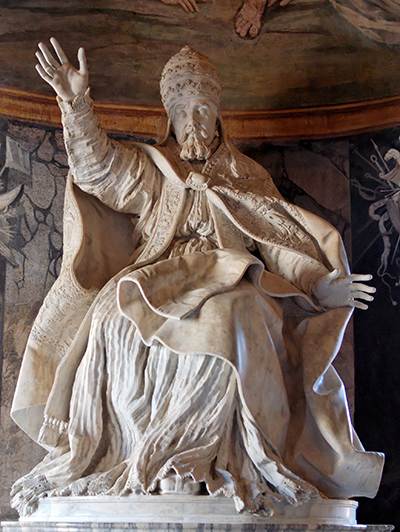The marble inscription of Pope Urban VIII was commissioned by Braccese, the secretary to Cardinal Carlo Barberini.
He later became the pope. The bust or inscription is still owned by the Barberini family. When Cardinal Maffeo Barberini ascended to the papacy as Pope Urban VIII in 1623, Braccese gave the marble inscription to him as a gift. Upon completion, Gian Lorenzo Bernini’s horizons rapidly broadened. Bernini would now produce sculptures for people in their private residencies while still maintaining his three-fold artistic roles of the sculptor, urban planner and architect. Lorenzo Bernini became the papal’s art curator due to his unmatched skills in art.
Due to Bernini's mastery of marble carvings, his peers would never agree with him. Marble carvings call for superior physical strength, and it is hard to learn, unlike painting. The marble inscription of Pope Urban VIII shows superiority and creativity of sculpture. In this inscription, Bernini’s sensitivity to the way light responds or reacts to marble is portrayed. He knew about both sides of marble; either by making it smooth or leaving it rough. Bernini made this particular inscription smooth to leave us with a lasting image of Pope Urban VIII. He shows a work that has been made of polished glossy with sand and oil.
Bernini uses his power of imagination, skill and observation to bring the pope to life. Though the inscription is inanimate marble, Bernini Lorenzo brings it to a life-like manifestation. Looking at the sitter or the inscription of Pope Urban VIII, Bernini portrays the pope as a man who is just about to talk. He drew the head of the pope from various artistic angles and captured the subject — Pope Urban VIII — in a sequence of rapid sketches.
Bernini brought out the pope's mouth in an outline or profile when was about to speak. There is no flattery or muscular tension around the pope's mouth. It was Bernini's style of showing the human side of the pope that made him famous. Bernini avoided the stubborn presentation of the pope's body sliced off across the upper part of the chest by making the cut of his garment follow the pope's cape. He also made sure that the pope’s torso’s expanse was deep enough to give the pope’s inscription a certain weight.
The sitter’s or the marble inscription of Pope Urban VIII head is slightly turned to his left and his biretta - the stiff cap with ridges across the crown- is stationed in the middle or slightly to his left. Due to his artistic prowess, Bernini used subtle shifts from a picture-perfect symmetry so as to catch the viewer’s attention.
At the same time, the light reflects off the folds and creases of the pope’s cape. Looking at him closely, Pope Urban VII looks as if he is changing position. His eyeballs are not just blank spheres. Bernini carved them out to create an illusion of a man in deep thought. He was pictured with a faraway look into the horizon.
In the inscription, the Pope is in a room and seems to be responding to a comment from our position of view. It is spontaneous and an informal character of Pope Urban that Bernini was able to capture. It is no wonder then that scholars say, ‘What Shakespeare is to drama, Bernini may be to sculpture’. He was the chief pan-European sculptor who is instantaneously distinguishable with a unique style, vision and influence in art.




